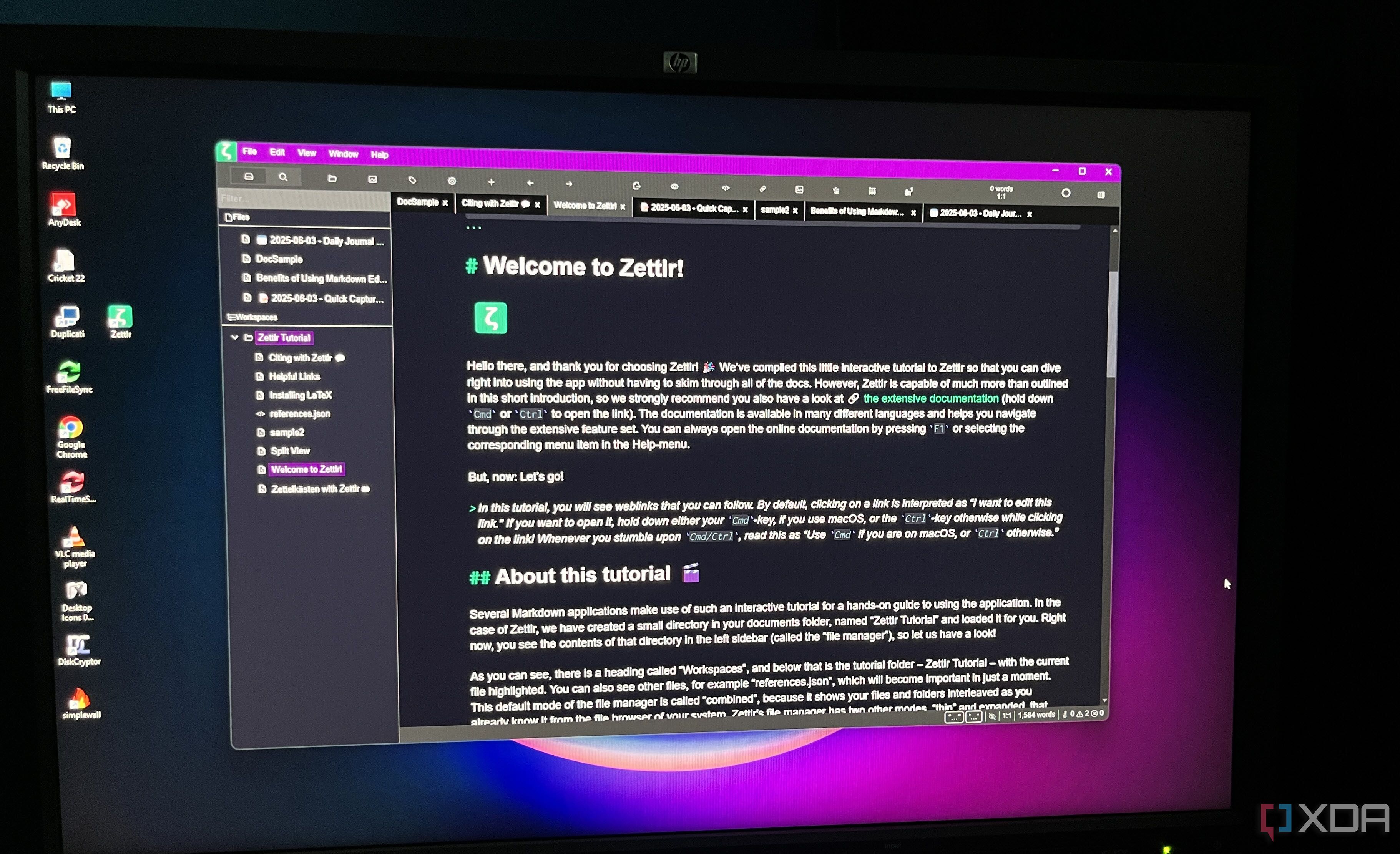Google Docs was my go-to writing tool for years. I used it for everything from article drafts and checklists to full-blown project planning. It worked well enough, but over time, I grew frustrated with the clutter, the reliance on internet access, and the growing list of features I didn’t need. What I really wanted was a more focused writing environment that put me in control of my work.
Replacing Google Docs with a Markdown-based workspace helped me reclaim focus and control over my writing.
That’s what led me to replace Google Docs with a Markdown-based setup, built around Ulysses. This change wasn’t just about switching apps; it was about changing how I write. Markdown gave me structure without getting in my way. Ulysses turned out to be the perfect tool for organizing and managing a large volume of content without any of the noise. The result is a workspace that feels cleaner, faster, and far more enjoyable.
Why Markdown beats Google Docs
A focused and frictionless writing environment
The main reason I moved away from Google Docs was the distraction factor. Every time I opened a document, I was hit with toolbars, comments, suggestions, and formatting menus. It’s fine if you're collaborating with a team, but for solo writing, it adds unnecessary friction. Markdown, on the other hand, strips everything down to the essentials: just you and the words.
Google Docs does support using Markdown, and has distraction-free options, but writing in a dedicated Markdown editor is a more seamless experience for me. You might find the same is true for you.
Ulysses makes Markdown feel natural. I don’t need to think about formatting while I write. A heading is a single hash mark, bold text uses asterisks, and links are simple to insert. It might sound minimal, but that’s the point. I can concentrate fully on the content without constantly clicking menus or breaking my flow to format something.
Another thing I appreciate is the flexibility. With Markdown, I can take a single document and export it to PDF, Word, HTML, or even publish it directly to my site. My content isn’t locked inside a proprietary format or hidden behind a web interface. This gives me a sense of ownership over my work that I didn’t have before.
A better system for keeping projects tidy
If you write a lot, staying organized becomes its own challenge. Google Docs lets you create folders, but it’s easy for things to get buried or mislabeled. That structure works fine for casual use, but once you’re juggling multiple projects, clients, or editorial calendars, it starts to fall apart. Ulysses solves this more smartly by combining sheets, groups, and filters.
I use groups to separate major categories of work. Inside each one, I break things down into sheets that act like individual documents or sections of a larger project. This setup makes it easy to move things around without creating a mess. I can even stack subgroups for more complex projects, giving me total control over how everything is arranged.
Tags and filters add another layer of organization. I can mark a sheet as “in progress,” “editing,” or “ready to publish,” and sort by those states later. When I’m on a deadline, I don’t need to dig through folders to find what I’m looking for. Everything is just a search or click away, and it all lives inside one tidy workspace.
Sync and storage without the tradeoffs
Keeping everything in sync without giving up control
Syncing was one of the few things Google Docs did well, and it’s what kept me from switching for a long time. But after using Ulysses with iCloud, I found that syncing didn’t have to come at the expense of privacy or flexibility. My writing now syncs seamlessly across Mac, iPhone, and iPad, without tying me to a third-party web service.
Unlike Google Docs, Markdown files are portable and lightweight. I can open them in any text editor, back them up to an external drive, or move them between apps without losing structure or formatting. That independence matters. I’m not worried about losing access to my files if a service goes down or changes its terms.
Ulysses also includes version control and backup features that work automatically. Every change I make is saved, and I can roll back if something goes wrong. Combined with iCloud and Time Machine, I have multiple layers of redundancy. All of it happens behind the scenes. It just works, and I never have to manage it manually.
What you need to get started
Just a Markdown app and basic syntax skills

Making the switch to Markdown sounds more complicated than it is. All you need is an editor that supports it and a willingness to learn a few basic syntax rules. I chose Ulysses because of its streamlined design and great Mac integration, but it’s far from the only option. Zettlr, Obsidian, and Typora are all solid alternatives depending on your platform.
Learning Markdown doesn’t take long. You’ll use # for headings, * for bold or italic, and brackets for links. That’s about 90% of what most people need day to day. It becomes second nature after a couple of writing sessions. Once you’ve got the basics, you can dive deeper into things like tables, checklists, and footnotes if needed.
Setting up a Markdown workspace is also dead simple. You don’t need to install plugins or mess with complicated settings. Just open your editor, create a folder or group for your project, and start writing. If you want to sync across devices, most apps support iCloud, Dropbox, or other cloud services. It’s quick, portable, and easy to maintain.
A cleaner, calmer way to write
Replacing Google Docs with a Markdown-based workspace helped me reclaim focus and control over my writing. I spend less time managing documents and more time actually creating content. Everything stays organized, syncs reliably, and works the way I want it to. If you’re tired of bloated interfaces and just want a better writing experience, Markdown might be exactly what you need.

Ulysses has become my writing tool of choice thanks to its simple, clean interface that meshes perfectly with my workflow.
.png)











 English (US) ·
English (US) ·